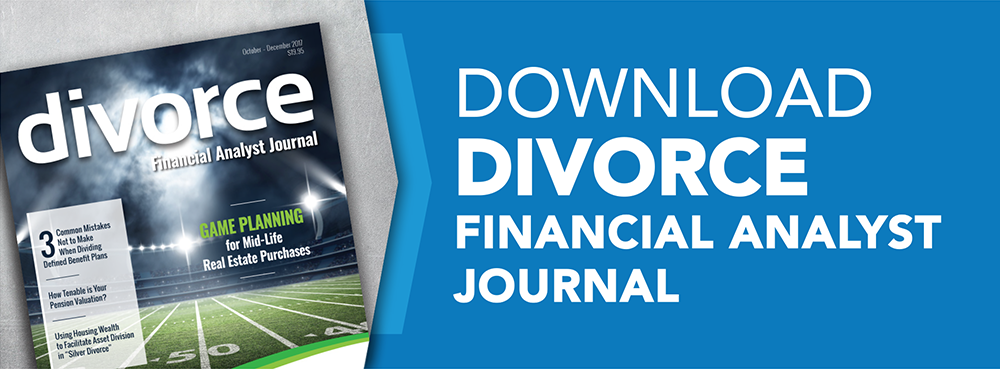Module Three: Financial Divorce Specialist Case Studies
In Module Three, financial divorce specialist candidates learn how to apply all of the information that they’ve learned in previous modules to a series of case studies.
Introduction
Installing and Using the DIVORCE SETTLEMENT ANALYST™ Software.
Chapter 1: "Paul and Sara Case Study"
This case is a general overview of how to analyze the data you receive from clients and how to interpret the spreadsheets. As you complete this case study, you will learn:
A. The basic input data for simple assets and liabilities.
B. The philosophy behind making changes.
C. How various amounts of spousal support affect the parties.
D. The importance of working capital versus net worth
E. How negative cash flow affects the retirement accounts and the tax consequences.
Chapter 2: "Bob and Cindy Case Study"
This case illustrates a stay-at-home-spouse who needs to upgrade her education before being able to support herself, and support for two children. As you complete this case study, you will learn:
A. How you can show a positive net worth with negative cash flow when the net worth is held in a non-income producing capital asset (such as a family home).
B. What to do with a change in residence: selling the family home and moving into the rental property.
C. How to calculate the proceeds from the sale of property.
D. How to input Tax Adjusted assets and an explanation of why this is necessary,
E. How to deal with shares of a private corporation.
F. Shifting debt from one party to the other and how this affects the equalization payment.
Chapter 3: "Doug and Rose Case Study"
This case illustrates a defined benefit pension and how divorce later in life can affect retirement for both parties. As you complete this case study, you will learn:
A. How a first offer of minimal spousal support does not provide financial security for both parties.
B. How you can use the “source” or “description” fields to detail several assets of the same type.
C. The impact of having to draw on retirement funds too early.
D. How to input a defined benefit pension as an asset – but illustrate it as an income.
E. How to look at the sale of property many years after divorce – including how this changes living expenses and allows some of the property equity to supplement retirement.
Chapter 4: "Andrew and Mary Case Study"
This case illustrates a high net worth couple with multiple real-estate properties. As you complete this case study, you will learn:
A. The importance of working capital and the impact of increasing spousal support and selling property.
B. How to make adjustments that will increase cash flow.
C. How to calculate the capital gains tax from the sale of property.
D. How to calculate the proceeds from the sale of real estate.
About the Software
DIVORCE SETTLEMENT ANALYST™ (DSA™) software is designed to forecast the financial outcome of different proposed divorce settlements. It allows judges, lawyers, financial planners, and divorcing couples to compare the financial results of different settlements. DSA can show the financial impact of increasing the amount of spousal support or child support or extending the period of time that either is paid; usinf DSA, you can compare the effect of dividing the property equally versus a disproportionate property division, or how a change in the cost of living impacts a couple’s financial future.
DSA is designed to help you discover and find workable solutions to problems such as:
- How an equal division of property can leave the lower income spouse destitute within a few years.
- How to structure a settlement that benefits the lower-income spouse but does not necessarily harm the higher-income spouse.
- How your client can enjoy a certain standard of living without going broke in the process.
Register for the Financial Divorce Specialist course.
For an overview of CDFA Resources for Canada, click here.

 800.875.1760
800.875.1760








